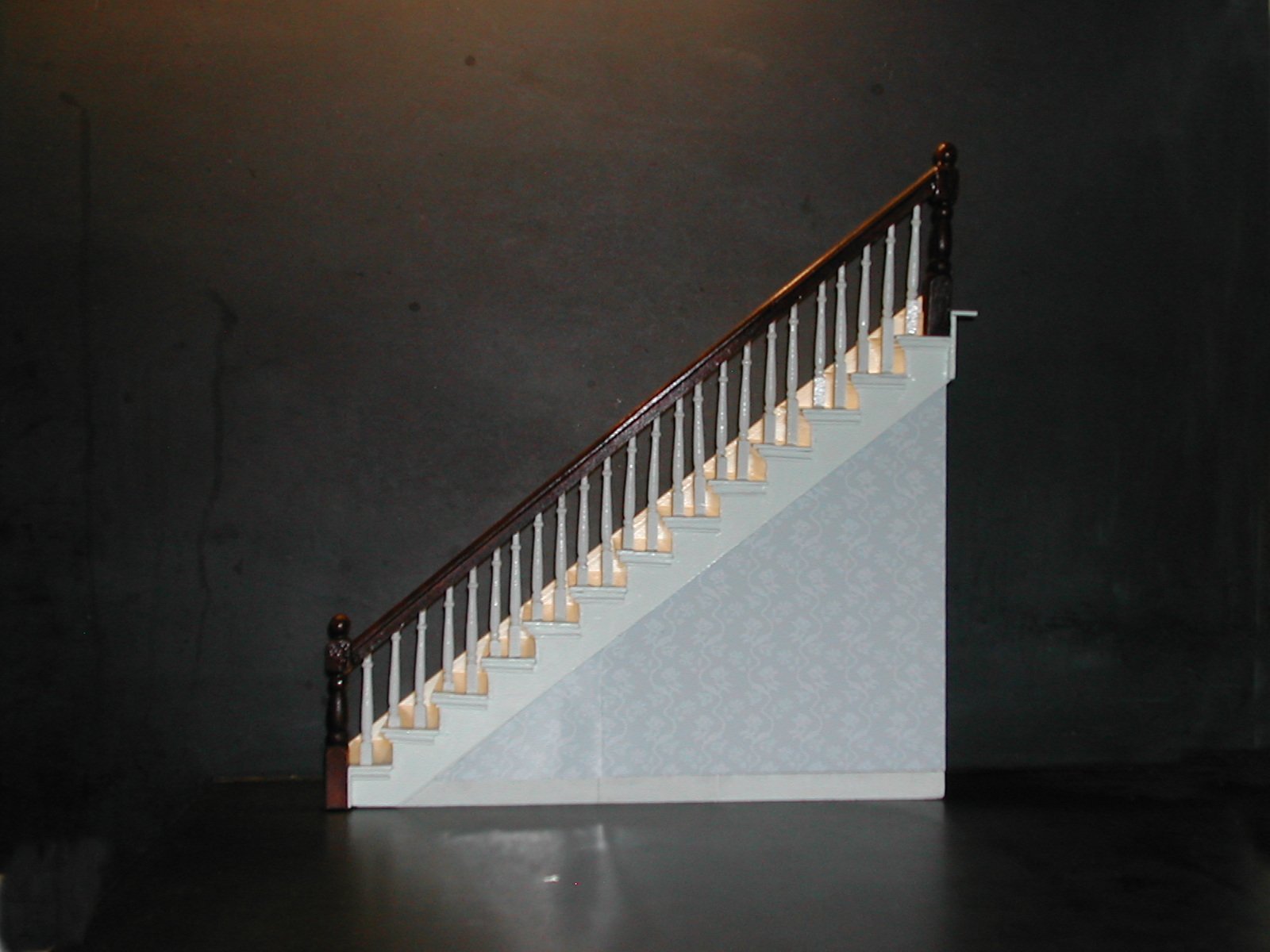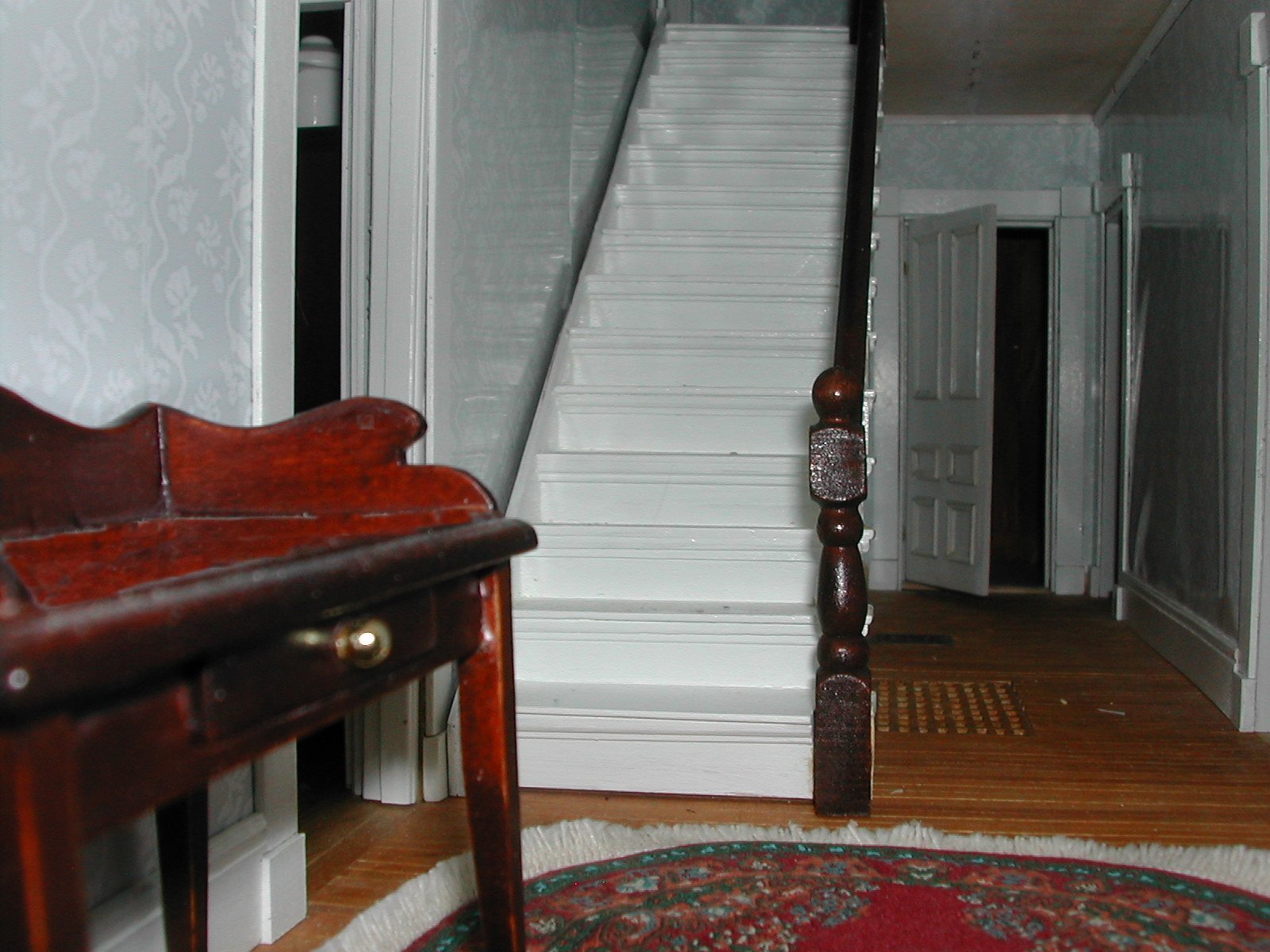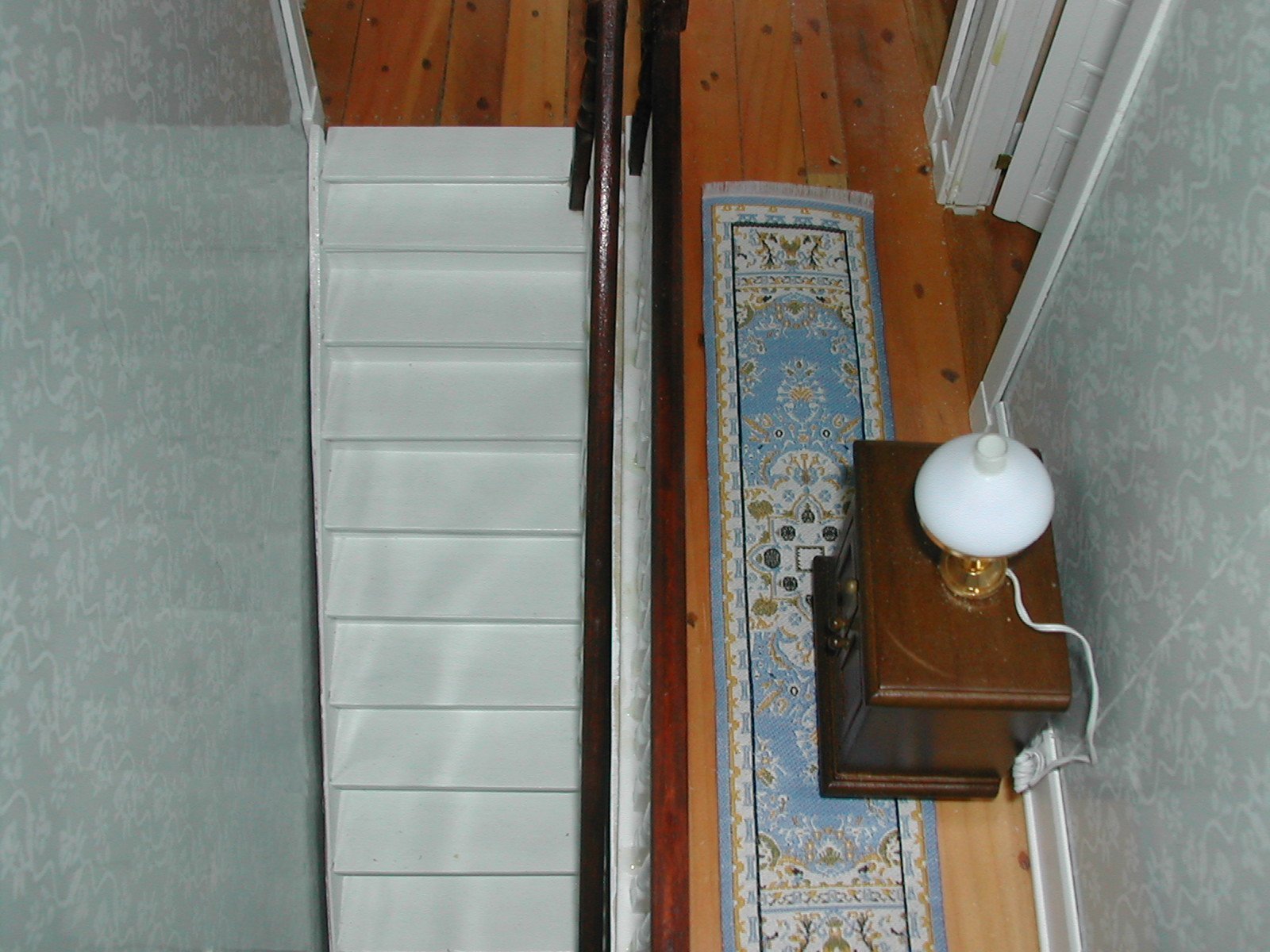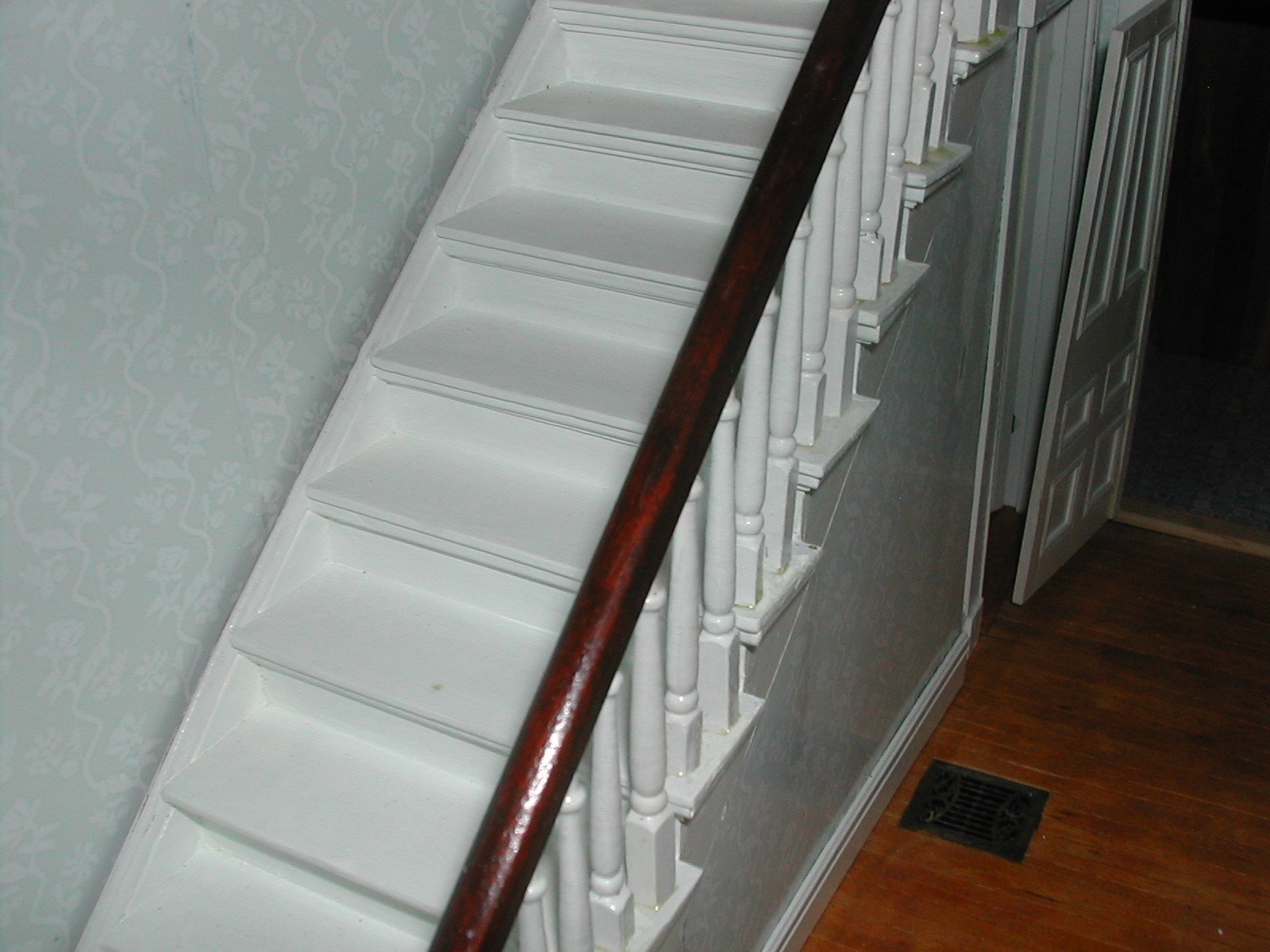The hall
stairs were built as a complete and separate unit from the dollhouse
because
the stairs extend up the stair well into the second floor and may be
damaged when placing the second floor onto the first floor.
Therefore, the stairs are not put into place until the house is
assembled. The
complete unit is shown on the right.
The most important part of constructing the stairs is that the two
sides comprising the stair carriage must match exactly, otherwise the
risers and steps would be crooked. This was accomplished by fastening
the
two strips that would become the stair carriage together with two
nails before cutting,
one at each end. Then the ends were cut to the proper angles to fit
into the dollhouse. The cutouts for the risers and steps were then cut
as a matched pair using the scroll saw. Then they were separated, well
sanded and
finished.
|
 |
The precut
risers and steps were then glued to the stair carriage using 5 minute
epoxy producing a rigid unit. The frame to hold the steps, including
the
wall, was then attached. The whole unit was then given two coats of
primer paint and two coats of white high gloss finishing paint.
Although the spindles and newel posts were purchased, the hand rail was
milled by Olof. A slot was cut in the bottom of the hand rail to accept
the
spindles. The spindles, hand rail and newel posts were all painted
prior to
assembly. Again these were glued in place using 5 minute epoxy. Finally
the wall paper was applied and the baseboard molding was attached to
completed the
unit.
|
 |
Here the unit is in place but the
carpeting has not as yet been attached. The carpeting was put in place
using a hot glue gun and the material was glued on both the stair
and under the nose of the stair above to give it a nice and tight
appearance eliminating gaps when viewed from the side.
|
 |
A view looking down shows the
two bannisters, one going the length of the hall upstairs, the other
going down the flight of stairs.
|
 |
This view shows the detail of the
carved spindles.
|
 |
